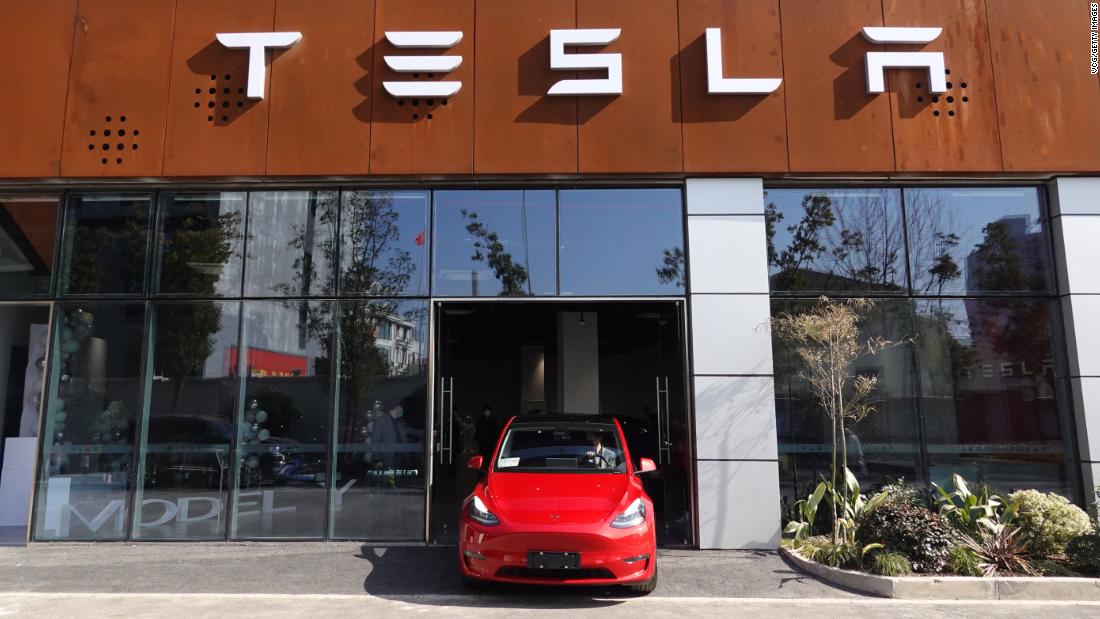The electric automaker announced the novelty
on twitter on Monday, posting photos of the SUV being purchased at a company showroom.
Model Y is the second vehicle Tesla (TSLA) made and sold in China, after deliveries of the Model 3 started last year. Both lines are being produced at the company’s large Gigafactory in Shanghai, where manufacturing started in 2019.
Model Y starts at 339,900 yuan ($ 52,400) for the “long range “version and 369,900 yuan ($ 57,000) for the” performance “version.
Deliveries started on Monday in cities like Shanghai, Hangzhou and Wuhan, the company said in a post on Chinese social media. To help customers feel more comfortable, the team also packed a “virus prevention” kit on the new vehicles, which included bottles of hand sanitizer, he added.
Growing up in China
China has increasingly become a critical part of Tesla’s global strategy, with CEO Elon Musk once calling his factory a “model for future growth”.
In 2019, the company met its own deadline to start making cars in China, starting experimental production just 10 months after the factory opened. This increased confidence that the company would be able to achieve delivery goals as it grew.
Tesla said the initial target for the Shanghai plant is to make 250,000 cars a year, before increasing to 500,000 units. It revealed last October that it had reached the first target, while “continuing to expand” capacity significantly.
The company was also the first foreign automaker to be allowed to open a factory in the country without a Chinese partner, putting pressure on local players.
Tesla previously won a tax cut for some of its cars, which helped make its prices more attractive to customers. It also lowered the price of its Model 3 to qualify for government subsidies.
The debut of the Chinese-made Model Y was long awaited, with the launch seen as yet another challenge for the Chinese rival Nio (NIO), which sells its own line of electric SUVs.
Tesla recently relied more heavily on its operations in China, including a decision last October to start exporting Chinese-made vehicles to Europe.
He also has plans to go further in other parts of Asia, including a launch in India that is due to take place this year.
Meanwhile, the Chinese automotive market is expected to become even more crucial in the coming years. “In 2022, we believe [more than 40%] of Tesla’s overall delivery sales could come from China, as it remains the main growth region going forward, followed by Europe and then the US, “Wedbush analysts wrote in a note last week.
– Serenitie Wang contributed to this report.
.Source
Related
